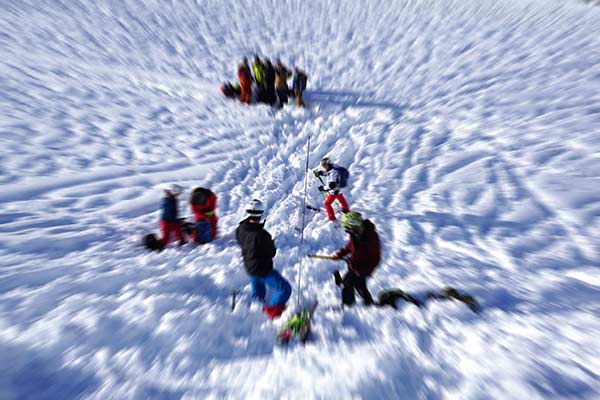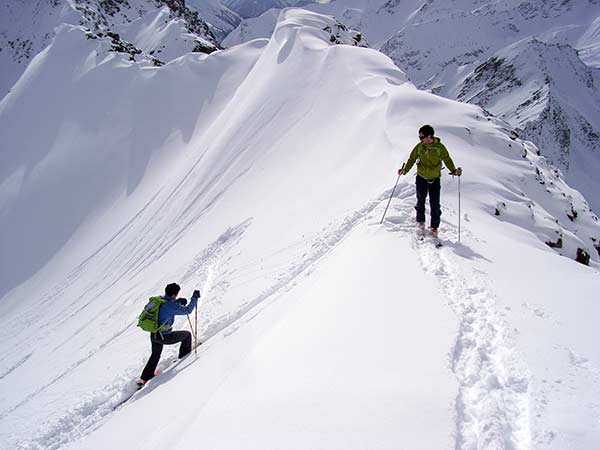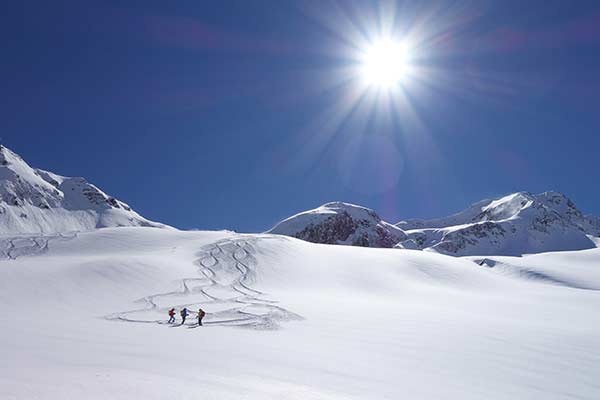Eight avalanche deaths within a weekend is the tragic balance sheet at the beginning of February. According to the Austrian Alpine Association, the winters have one thing in common every year: people are drawn to the mountains, despite alarming forecasts from the avalanche warning services. "Man" can learn above all from how women deal with natural hazards. The statistics of avalanche victims show that it hits men far more often!
Around 22 people die in avalanches every year. The risk is particularly high this winter due to the unfavorable snowpack structure. Avoiding steep slopes and extreme tours is often the only means of choice.
The Austrian Alpine Association points out that the victims are neither unsportsmanlike, inexperienced or poorly equipped. The reasons for the tragic events lie much more in the risk behavior of each individual. And social role models have a great influence on this.

Avalanche risk: it hits men more often
17 of the 18 avalanche victims of the previous winter season in Austria were men. This gender ratio is the rule rather than the exception. "Even if there are still more men than women on tour, this ratio cannot be explained by this," says Michael Larcher, head of the mountain sports department at the Austrian Alpine Club.
17 of the 18 avalanche victims of the previous winter season in Austria were men.
For the Alpine Club, it is primarily the risk behavior that is responsible for this unequal balance sheet. “Women make decisions more defensively, take warnings more seriously and are less likely to be under the illusion of control.” According to the mountain guide and avalanche expert, it is “as if women were much more aware of their vulnerability than men.”
Is this superior basic equipment of women innate or has to do with culture and upbringing? It is undisputed that social role models have a great influence. Women are more cautious on the road, but they are also under less social pressure. If they are in a decision-making situation, they listen more closely to their fears.
“Women make decisions more defensively, take warnings more seriously, and are less susceptible to the illusion of control. It's like women are far more aware of their vulnerability than men."
Michael Larcher
For the Alpine Club, one of the keys to risk prevention is to openly address insecurities in the group and recognize this as a strength. For example, by making regular stops on a ski tour and openly discussing the further course of the tour. "Decisions should be based on facts and ground rules, not on gut feelings," says Larcher.

Willingness to take risks on the mountain
Why, despite the awareness of the danger, the willingness to take risks again and again prevails also has to do with the social expectations of gender roles. Men come under more pressure in a decision-making situation than women. In the moment of uncertainty, the fear of admitting one's doubts and insecurity to oneself dominates.
«The willingness to take risks is increased by various factors. It is strong emotions such as euphoria or the pressure of expectations and success within a group that tempt people to take greater risks.”
Michael Larcher
«But also dangerous routine or the temptation of the rare opportunity. Self-reflection and observing what's going on in the group is just as important as observing the terrain and snowpack," recommends Larcher.

Prevention and educational work
«Two three questions should always be in the head of everyone who is out and about in the free skiing area: How? What? Where?», informs Michael Larcher.
Three questions about snow and terrain:
- Who is it dangerous today? What is the danger level of the avalanche situation report?
- What is today the avalanche problem? Is it snowdrift, old snow, or something else?
- Wo, at what altitude and slope direction are the danger spots?
And three questions about mental and group dynamics:
- Who am I feeling today? Could euphoria or pressure to perform lead to an increase in risk?
- What going on in our group? Is competition an issue? Is it clear who decides?
- Wo and when will decisions be communicated openly?
“With these elementary questions and a decision-making tool like that stop or gomethod or skitourenguru.com, well-founded decisions can then be made," says Larcher.
In addition to the essential emergency equipment of shovel/probe/avalanche transceiver, the Alpine Club recommends airbag backpacks. In addition to the functioning equipment and physical fitness, careful tour planning also plays a decisive role.
That might interest you
- With this avalanche equipment you are prepared for emergencies
- The onion principle: Layer by layer for more comfort on the mountain
Do you like our climbing magazine? When we launched LACRUX, we decided not to introduce a payment barrier. It will stay that way, because we want to provide as many like-minded people with news from the climbing scene.
In order to be more independent of advertising revenue in the future and to provide you with even more and better content, we need your support.
Therefore: Help and support our magazine with a small contribution. Naturally you benefit multiple times. How? You will find out here.
+ + +
Credits: Text media release of the Austrian Alpine Club, cover photo John Waibel | Unsplash

